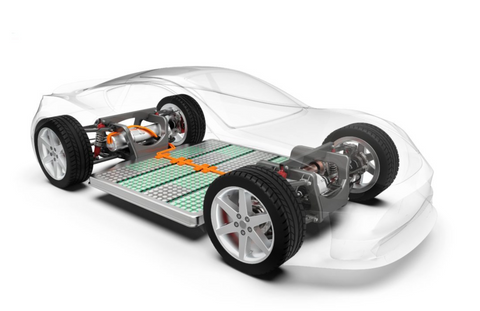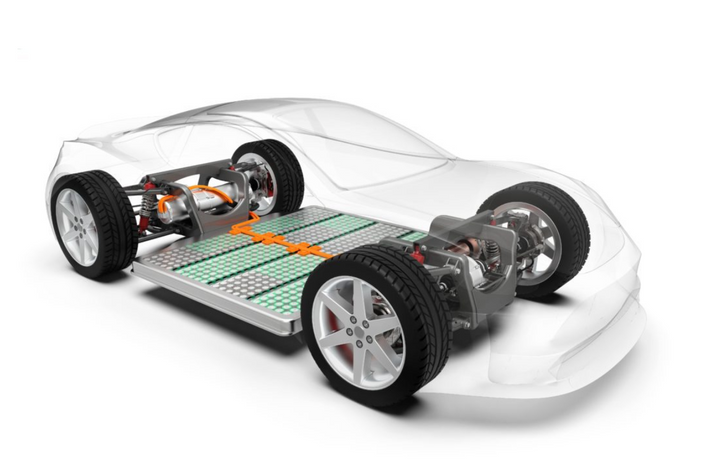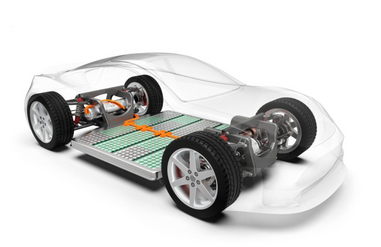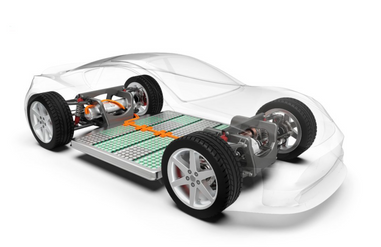- No products in the cart.
In the ever-evolving field of battery research, scientists and engineers are at the forefront of a revolution aimed at reshaping the energy storage landscape. Central to this innovation are the myriad reagents that play pivotal roles in enhancing battery performance, safety, and sustainability. This blog explores the top 10 reagents that are currently driving the forefront of battery research, each contributing uniquely to the ongoing quest for more efficient and powerful energy storage solutions.
- Lithium Electrolytes
Lithium electrolytes are one of the most important reagents in battery research. Lithium electrolytes are solutions of lithium salts that are used to transport lithium ions between the cathode and anode of a battery. Lithium electrolytes play a crucial role in the performance of a battery, affecting its energy density, power density, and cycle life.
Researchers are developing new lithium electrolytes that are more stable, have higher ionic conductivity, and are less flammable. Some promising new lithium electrolytes include:
- Lithium bis(trifluoromethanesulfonyl)imide (LiTFSI): LiTFSI is a highly stable lithium electrolyte that has good ionic conductivity.
- Lithium difluoro(oxalato)borate (LiDFOB): LiDFOB is a high-voltage lithium electrolyte that is compatible with nickel-rich cathodes.
- Lithium difluorophosphate (LiDFP): LiDFP is a low-cost lithium electrolyte that has good ionic conductivity and is less flammable than other lithium electrolytes.
- Sodium Electrolytes
Sodium electrolytes are an alternative to lithium electrolytes. Sodium is less expensive and more abundant than lithium, making it a promising candidate for use in large-scale energy storage applications. However, sodium electrolytes are more challenging to work with than lithium electrolytes, as sodium ions are larger and heavier than lithium ions.
Researchers are developing new sodium electrolytes that are more stable and have higher ionic conductivity. Some promising new sodium electrolytes include:
- Sodium bis(trifluoromethanesulfonyl)imide (NaTFSI): NaTFSI is a highly stable sodium electrolyte that has good ionic conductivity.
- Sodium difluoro(oxalato)borate (NaDFOB): NaDFOB is a high-voltage sodium electrolyte that is compatible with nickel-rich cathodes.
- Sodium difluorophosphate (NaDFP): NaDFP is a low-cost sodium electrolyte that has good ionic conductivity and is less flammable than other sodium electrolytes.

- Carbonate Esters
Carbonate esters are solvents that are used in many different types of batteries, including lithium-ion batteries, sodium-ion batteries, and potassium-ion batteries. Carbonate esters are relatively inexpensive and have good electrochemical stability. However, some carbonate esters are flammable and can be toxic.
Researchers are developing new carbonate esters that are more stable, less flammable, and less toxic. Some promising new carbonate esters include:
- Fluoroethylene carbonate (FEC): FEC is a relatively new carbonate ester that has good electrochemical stability and is less flammable than other carbonate esters.
- Dimethyl carbonate (DMC): DMC is a low-cost carbonate ester that has good ionic conductivity.
- Ethylmethyl carbonate (EMC): EMC is a carbonate ester that is less flammable than DMC and has good electrochemical stability.
- Phosphazenes
Phosphazenes are a class of polymers that are being investigated as potential electrolytes for batteries. Phosphazenes have good electrochemical stability and high ionic conductivity. However, phosphazenes can be expensive and difficult to process.
Researchers are developing new phosphazene electrolytes that are more affordable and easier to process. Some promising new phosphazene electrolytes include:
- Poly(bis(trifluoromethanesulfonyl)imide) phosphazene (P(TFSI)2PN): P(TFSI)2PN is a highly stable phosphazene electrolyte that has good ionic conductivity.
- Poly(difluoro(oxalato)borate) phosphazene (P(DFOB)2PN): P(DFOB)2PN is a high-voltage phosphazene electrolyte that is compatible with nickel-rich cathodes.
- Poly(difluorophosphate) phosphazene (P(DFP)2PN): P(DFP)2PN is a low-cost phosphazene electrolyte that has good ionic conductivity and is less flammable than other phosphazene electrolytes.
- Quinones and Analogues
Quinones and analogues are a class of organic molecules that are being investigated as potential cathode active materials for batteries. Quinones have a high redox potential, which means that they can store a lot of energy. Quinones are also relatively inexpensive and abundant. However, quinones can be unstable and can undergo unwanted reactions.
Researchers are developing new quinone-based cathode materials that are more stable and have higher energy density. Some promising new quinone-based cathode materials include:
- Anthraquinone (AQ): AQ is a relatively simple quinone molecule that has good electrochemical performance.
- Benzoquinone (BQ): BQ is another simple quinone molecule that has good electrochemical performance.
- Naphthoquinone (NQ): NQ is a more complex quinone molecule that has a higher energy density than AQ or BQ.
- Triazine-based quinones: Triazine-based quinones are a class of quinone analogues that have good electrochemical performance and stability.
- Battery Cathode Active Materials
Battery cathode active materials are the materials that store energy in a battery. The most common battery cathode active materials are lithium metal oxides, such as lithium cobalt oxide (LiCoO2) and lithium iron phosphate (LiFePO4). However, lithium metal oxides are expensive and have limited energy density.
Researchers are developing new battery cathode active materials that are more affordable and have higher energy density. Some promising new battery cathode active materials include:
- Nickel-rich layered oxide cathodes (NMC): NMC cathodes have a higher energy density than lithium cobalt oxide cathodes. However, NMC cathodes are less stable and can degrade over time.
- Lithium-rich layered oxide cathodes (LMO): LMO cathodes have a higher energy density than NMC cathodes. However, LMO cathodes are even less stable than NMC cathodes.
- Solid-state cathodes: Solid-state cathodes are a new type of cathode material that is made of a solid electrolyte. Solid-state cathodes are more stable and have higher energy density than traditional liquid electrolyte cathodes. However, solid-state cathodes are still in the early stages of development and are not yet commercially available.
- Nitriles
Nitriles are a class of organic solvents that are being investigated as potential electrolytes for batteries. Nitriles have good electrochemical stability and high ionic conductivity. However, nitriles are also flammable and can be toxic.
Researchers are developing new nitrile-based electrolytes that are more stable, less flammable, and less toxic. Some promising new nitrile-based electrolytes include:
- Propylene carbonate (PC): PC is a relatively simple nitrile that has good electrochemical stability and ionic conductivity.
- Acetonitrile (AN): AN is another simple nitrile that has good electrochemical stability and ionic conductivity. However, AN is also flammable and toxic.
- Fluorinated nitriles: Fluorinated nitriles are a class of nitrile analogues that have good electrochemical stability and are less flammable and toxic than traditional nitriles.
- Phosphate Esters
Phosphate esters are a class of solvents that are being investigated as potential electrolytes for batteries. Phosphate esters have good electrochemical stability and high ionic conductivity. However, phosphate esters can be expensive and difficult to process.
Researchers are developing new phosphate ester electrolytes that are more affordable and easier to process. Some promising new phosphate ester electrolytes include:
- Methyl phosphate (MP): MP is a relatively simple phosphate ester that has good electrochemical stability and ionic conductivity.
- Ethyl phosphate (EP): EP is another simple phosphate ester that has good electrochemical stability and ionic conductivity. However, EP is more expensive than MP.
- Triarylphosphates (TAPs): TAPs are a class of phosphate ester analogues that have good electrochemical stability and are less expensive than traditional phosphate esters.
- Boric Acid Esters
Boric acid esters are a class of solvents that are being investigated as potential electrolytes for batteries. Boric acid esters have good electrochemical stability and high ionic conductivity. However, boric acid esters can be expensive and difficult to process.
Researchers are developing new boric acid ester electrolytes that are more affordable and easier to process. Some promising new boric acid ester electrolytes include:
- Trifluoromethylphenylborate (TFMB): TFMB is a relatively simple boric acid ester that has good electrochemical stability and ionic conductivity.
- Bis(trifluoromethyl)sulfonylimide borate (BSB): BSB is another simple boric acid ester that has good electrochemical stability and ionic conductivity. However, BSB is more expensive than TFMB.
- Fluoroalkylborate esters: Fluoroalkylborate esters are a class of boric acid ester analogues that have good electrochemical stability and are less expensive than traditional boric acid esters.
- Organic Radicals
Conclusion:
As we navigate the complex landscape of battery research, these top 10 reagents stand as beacons of innovation, propelling us toward a future of more powerful, sustainable, and safer energy storage solutions. Whether it's the tried-and-true lithium electrolytes or the cutting-edge organic radicals, each reagent contributes uniquely to the ongoing narrative of progress in battery technology. With every discovery and breakthrough, we inch closer to a future where energy storage is not just a necessity but a driver of positive change in the way we power our world.
For over 40 years, Lab Pro Inc. has been committed to delivering highest quality lab chemicals, lab supplies, hand tools, lab equipment, reagents, distance learning kits, and cleanroom PPE apparel. Renowned by global medical device companies and laboratories, we ensure exceptional quality in every product. Contact us online or call 888-452-2776 to learn more. Discover top-notch lab supplies and elevate your experiments today!











































